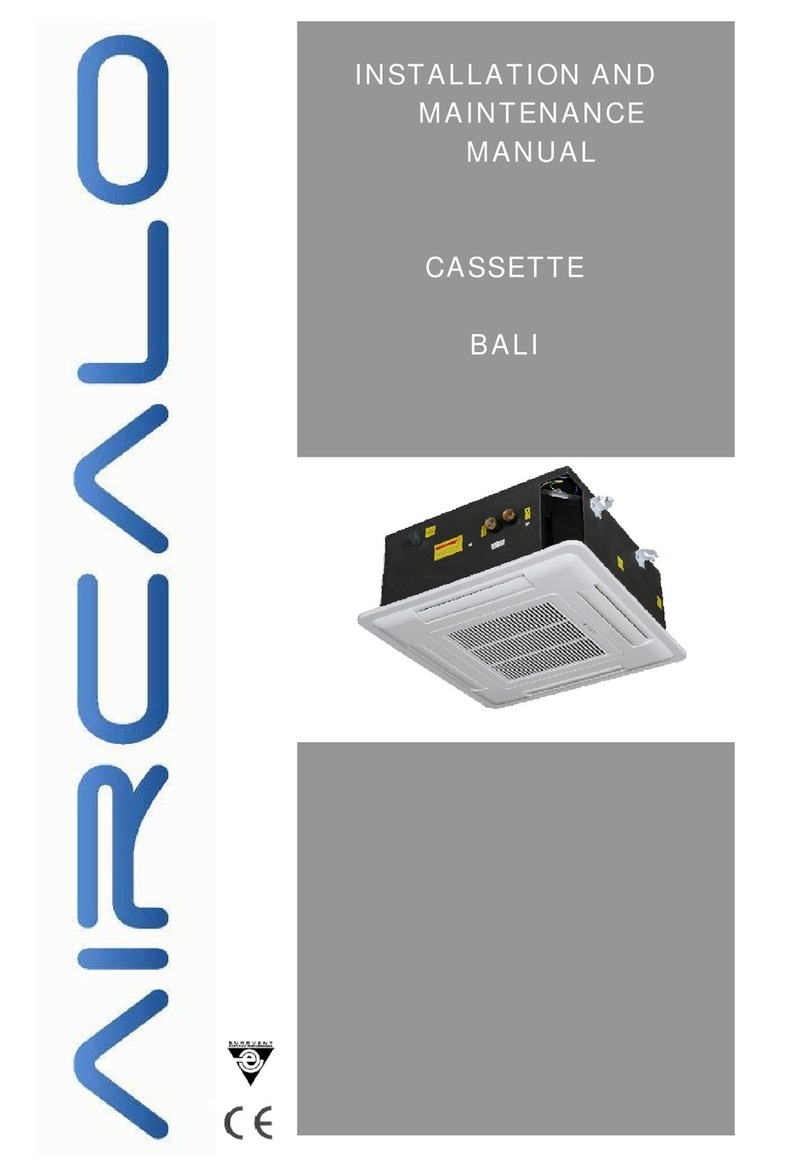3
1. Presentation
Mistral is a compact air handling unit for heating and cooling applications essentially on pipework system with
water coils and/or electric batteries supply.
Mainly used in ceiling mounting, it offers the advantages of a compact ceiled device associated to the modularity
of classic air handling units.
Standard units are made with a double-skin casing in steel with 1 mm of thickness + 25 mm of insulation
classified M0. Those units also exist in a superposed configuration with plate heat exchanger.
To the main casing [fan + coil + filters sections] for the long casing, [fan + filters sections] for the short casing,
some optional accessories could be added before and after as:
Flexible flanges and/or dampers
Mixing box 2 or 3 ways
Filter casing with rigid filter
Additional electric battery casing
Additional water coil casing
Sound Attenuators casing (supply and/or return)
Plenum with spigots
Heat recovery exchanger casing
Some constructive options are proposed:
Lacquer-coated RAL 9010
Super insulation acoustic TSR (Technic of spread sound).
The range is composed of 3 sizes and 5 models. The ventilation is provided by a free wheel + motor (AC IE2 or
EC). The speed variation is got by the use of a frequency converter (for AC IE2) or by a signal 0-10V (for EC).
2. Generalities
2.1. Warnings
Read carefully this manual before starting the installation.
Confide the installation to a qualified installer.
The units must be installed and bring into service respecting all instructions giving in this manual and in
compliance with local regulations. The installer will have to establish a declaration of conformity and
mark the installation.
Check that the tension and the frequency of the power supply is like the ones necessary at the unit
which has to be installed. Eventually, take into account of others devices connected up at the same
electric circuit. Also make sure that the safety requirements of national standards have been respected
over the power supply circuit and in particular that you dispose of a connection on the floor with an
adequate size.
After the installation, make a complete test of the system and explain all the functions to the user.
It is recommended to disinfect once by year, condensate drain pan to avoid the development and
spreading of legionella.
Use this unit only as a part of registered applications.
Keep the unit away from frost.
Before any intervention on the system and before handling any intern components cut the power
to the main circuit-breaker.
The manufacturer declines any responsibility for damage caused by the modification or mistake in
electric connections or hydraulic connections. Failing to follow the manufacturer instructions concerning
the installation or the use of the unit in conditions that exceed functioning limits indicated in this manual
can lead to the loss of the unit warranty.
Failing to follow the electrics security rules can caused a risk of fire in the case of an electric short
In case of an unusual functioning, turn off the unit, remove the electricity supply and contact specialized
personnel.
Maintenance must be made only by qualified personnel.
Recycle packaging in accordance with local laws regarding waste




























